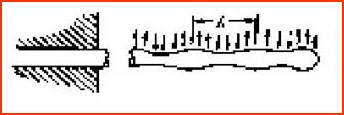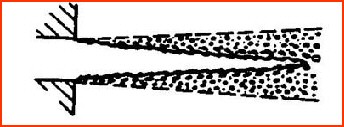![]()
Investigation Plan
To simulate industrial leaks, fluid escaping through an
orifice into ambient air is studied by measuring liquid drop sizes
and size distributions of aerosols forming at various distances
from the orifice. Measurements are made over ranges of temperature,
pressure, and orifice diameters. Measurements will be performed
for a variety of fluids that represent the range of fluids in industrial
use. Inhibition of aerosol formation also will be studied through
the addition of selected inhibitors.
Figures illustrate a physical procedure of spray break
up.
|
Rayleigh Regime: |
||
|
First Wind-Induced Regime : |
||
|
|
||
Twisted fluid
column oscillates with air friction |
Wave-like
breakup caused by air friction |
||
|
Second
Wind-Induced Regime : |
||
|
Atomization-Fully-Developed
Regime : |
||
|
|
|
|





